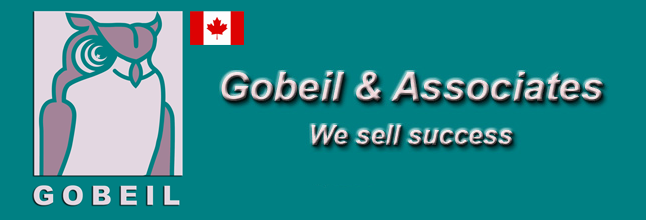The Personal Financial Planner’s Manual™
will guide you through current and up-to-date concepts, definitions and strategies required to address client’s needs with examples as to how they apply to client situations that you would find on the Examinations. The Manual is available in printed form or as Software that will run on a Windows PC, or an Apple MAC.
The Manual includes 69 chapters addressing the components of financial planning as defined in the CFP® and the PFP® Professional Competency Profiles: financial planning practices, financial management, income tax planning, investment planning, education planning, risk management, retirement planning and estate planning.
"I relied entirely on the Personal Financial Planner's Manual as my study material during preparation for the CFP® Exam. I found the material very detailed, technically sound and insightful. Your preparation guide was particular helpful in focusing my study time." Jonathan Roung, CFP®, PFP
To see how the Manual is written, you can review the
Chapter on Registered Education Savings Plans
TABLE OF CONTENTS
1 PROFESSIONAL PRACTICE
1 Advanced Personal Financial Planning
2 Financial Planning Practice Standards
2 FINANCIAL MANAGEMENT
1 Income, Taxes & Lifestyle Expenditures
2 Money Management
3 Home Ownership
4 Behavioral Finance
5 Planning for the Disabled
6 Registered Disability Savings Plans
3 INCOME TAX PLANNING
1 The Personal Income Tax Return
2 Personal Tax Rates & Credits
3 Taxation of Employees
4 Personal Deductions & Benefits
5 Taxation of Property Income
6 Taxation of Capital Property
7 Income Attribution, Split Income & Minimum Tax
8 Income Tax Compliance
9 Income Tax & Benefit Planning
10 The Federal Budget
4 INVESTMENT PLANNING
1 Investment Planning
2 Guaranteed, Interest-Producing Investments
3 Bonds & Debentures
4 Common & Preferred Shares
5 Analysis & Derivatives
6 Income Trusts
7 Tax-Free Savings Accounts
8 Investment Theory & Portfolio Design
9 Investment Funds
5 EDUCATION PLANNING
1 Education Planning
2 Student Grants and Loans
3 Students and Income Tax
4 Registered Education Savings Plans
5 Lifelong Learning Plans
6 RISK MANAGEMENT
1 Risk Management
2 Risk of Disability
3 Health Insurance
4 Critical Illness Insurance
5 Long-Term Care Insurance
6 Life Insurance
7 Property and Casualty Insurance
8 Insurance Contracts
7 RETIREMENT PLANNING
1 Retirement Planning
2 Government-Sponsored Retirement Income Programs
3 Registered Retirement Savings Plans
and Registered Retirement Income Funds
4 Employer Sponsored Pension Plans
5 Other Savings Plans
6 Pension Adjustments, Locked-In Funds, & Transfers Between Plans
7 Annuities
8 Investment Planning
9 Income Tax Planning
10 Post-Retirement Plan
11 Retirement Savings Plan
8 ESTATE PLANNING
1 Estate Planning
2 Forms of Ownership
3 Family Law
4 Trusts
5 Probate, Intestacy & Powers of Attorney
6 Wills
7 Charitable Donations
8 Estate Freezes
9 Death & Taxes
10 U. S. Estate Taxation
11 Substitute Decisions
8 BUSINESS OWNERSHIP
1 Planning For Business Ownership
2 Proprietorships and Partnerships
3 Corporations
4 Taxation of Shareholders
5 Buy-Sell Agreements
6 Estate Freezes
You can click your back button to return
CONCISE, PRACTICAL INFORMATION
- Disability insurance - Probabilities of disability, the provisions in policies, individual versus group plans, strategies to obtain adequate, and tax implications.
- Education - Tuition fees and room and board at universities, RESPs, CESGs and the Canada Student Loans, and tax considerations.
- Employee benefits - Statistics on income and taxes in Canada, employment law, and taxation of employee benefits.
- Estate planning - The planning process, spousal and testamentary trusts, wills checklist, a sample will, and tax considerations.
- Income tax - Tax tables, calculations of tax, automobile benefits, deadlines, recent changes and tax planning considerations.
- Investments - Strategies and selection criteria for T-Bills, term deposits, common shares, preferred shares, warrants, calls and puts, Canadas, corporate bonds, mutual funds, and mortgage-backed securities.
- Life insurance - Analysis of life insurance needs, life expectancy, the provisions in term, whole life, universal and group insurance contracts, CPP benefits, tax considerations, and strategies to reduce risk and cost.
- Lifestyle expenditures - Guidance on expenditures including budgeting practices, family expenditures in Canada, CPI information, and strategies for reducing expenditures.
- Mortgage and housing - Costs of home ownership, mortgages, tax considerations, strategies for purchasing and financing a home, and a national survey of housing prices.
- Pensions - Types of plans, pension contributions, regulations, funding, benefits, strategies and sources of information.
- Portfolio design - Profile of the investor, investment characteristics, income tax considerations, strategies, reporting on investment performance, and a portfolio design checklist.
- Professional standards - Emerging professional standards for the conduct of a PFP practice, acceptance of an engagement, and preparation of personal financial statements.
- Quick reference - Current federal and provincial tax rates, prescribed interest rates, amounts and rates for CPP, OAS and EI.
- Retirement issues - The retirement planning process, retirement income projections, retirement savings plans, life expectancy, tax considerations, and strategies.
- RRSPs and DPSPs - Qualified investments, contribution limits, earned income, carry forward, excess contributions, rollovers, and strategies to maximize benefits.
You can use the Manual as a reference service to keep your knowledge current and meet your continuing education requirements.
To ensure that The Manual is complete and accurate, we talk to candidates who have written the Examinations, review the changes to the Competency Profile, review draft legislation to change the Income Tax Act and other relevant legislation, and read the Canadian financial press and many specialized websites.
Chartered Professional Accountants of Canada
The Manual is also distributed by CPA Canada to its many members who have an interest in Personal Financial Planning.
License for Electronic Version
The one-year license for the electronic version includes 4 quarterly updates to keep your information current. We notify you when an update is available for you to download. When your license is up for renewal, we will advise you.
Trademark
The Personal Financial Planner's Manual™ is a trademark of D. R. Gobeil & Associates Ltd.
